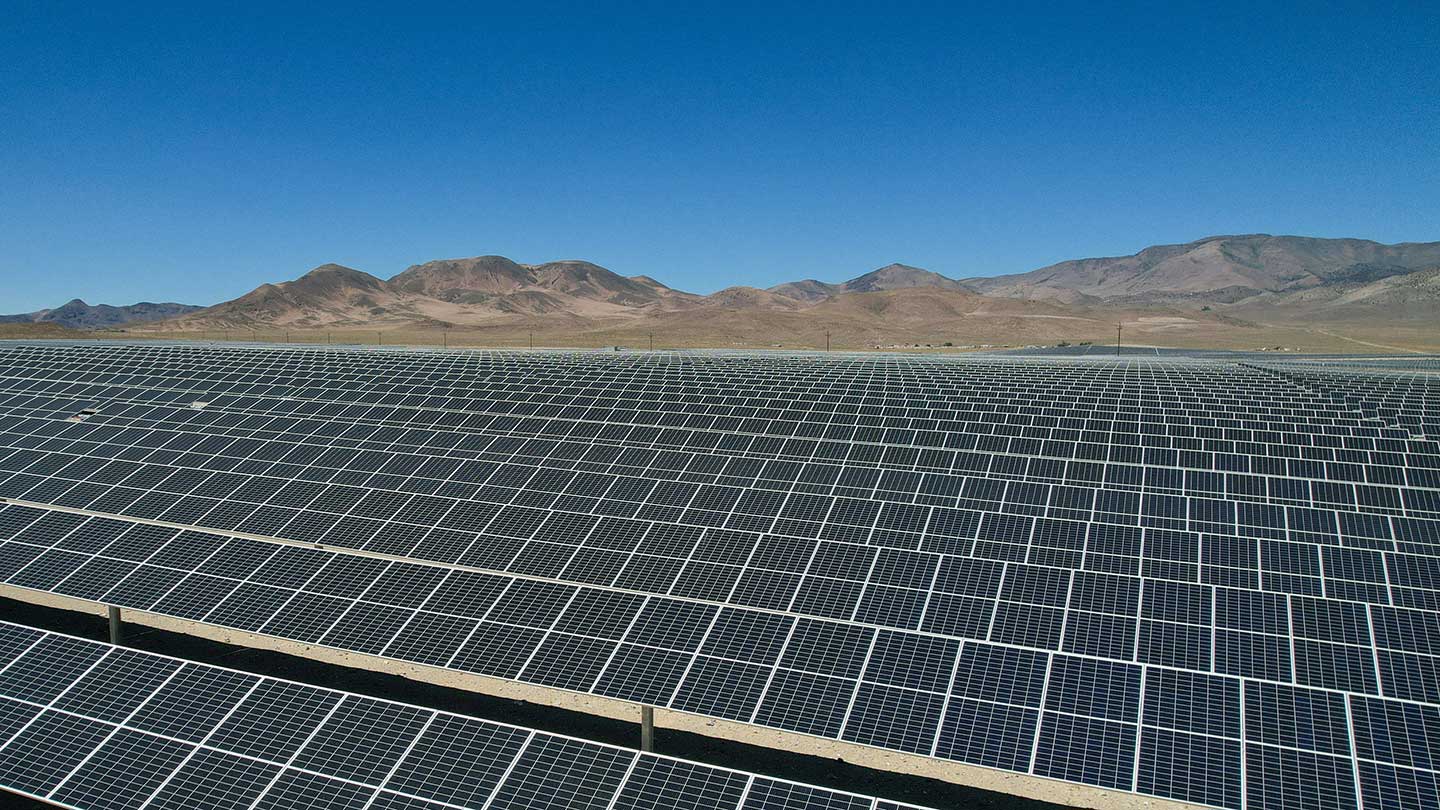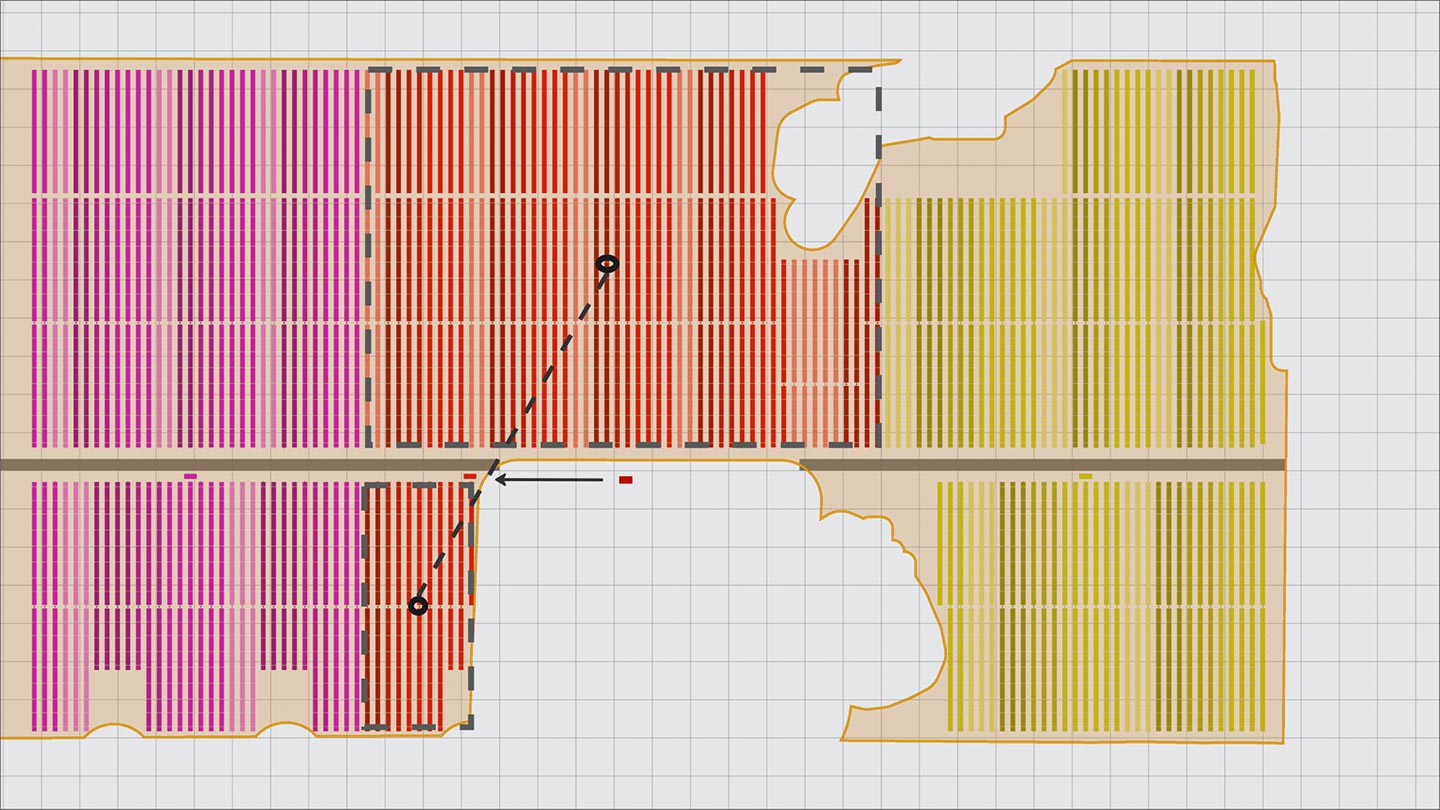Understanding How Solar Panel Efficiency Drives Performance
%20(Custom)%20(1).jpg)
Solar energy systems have come a long way in recent years, but not all panels perform the same. One of the biggest differentiators is how efficiently a panel converts sunlight into electricity. This simple number has a big impact on everything from the size of your system to your bottom-line savings.
Panel efficiency affects how much electricity your system can produce. It’s a detail that often gets overlooked, but understanding it can help you make smarter, more cost-effective choices.
What Is Solar Panel Efficiency?
Solar panel efficiency is the measure of how much sunlight a panel can turn into electricity. It shapes the structure of a solar system, affecting its size, output, and the speed at which it delivers returns. Understanding how efficiency relates to commercial solar energy helps organizations make smarter, better-informed decisions.
At a basic level, efficiency compares the amount of solar energy a panel receives to how much usable electricity it produces. For example, a 20% efficient panel converts one-fifth of the sunlight it catches into power. That might not sound impressive, but even small percentage gains can lead to meaningful performance improvements over time.
Higher efficiency panels shine in different settings. Large installations often benefit the most, where generating more energy per square foot can boost output without needing extra space. This is especially helpful when site limitations or high energy needs are part of the equation.
How Is Solar Panel Efficiency Measured?
Manufacturers test solar panels under Standard Test Conditions (STC), which include a panel temperature of 25°C, sunlight at 1000 watts per square meter, and specific atmospheric conditions. These settings create a level playing field for comparing different products.
But actual performance rarely mirrors these lab conditions. Warmer temperatures often reduce output, while factors like panel angle and location can affect how much sunlight hits the surface. Even seasonal and daily weather changes come into play.
That’s why it’s helpful to look at real-world data in addition to lab ratings. Performance ratio metrics, which adjust for environmental factors, can give a more accurate picture of how panels perform once installed.
Factors That Influence Efficiency
Several variables affect how well a solar panel converts light into electricity. These include the quality of the photovoltaic materials, the precision of the manufacturing process, and how well the components hold up over time. Even internal wiring and connections can influence energy output.
External issues also matter. Shade from trees, nearby structures, or even dirt buildup on the panel’s surface can cause noticeable drops in efficiency. That’s why smart system design and regular maintenance are so important.
Teams often assess these factors early on to improve overall energy performance, using advanced modeling tools to account for terrain, shading, and panel orientation. The goal is to predict how a system will behave in the real world and maximize the return on energy production.
Material Types and Their Impact
The material composition of a solar panel greatly affects its efficiency. Monocrystalline panels, made from a single crystal structure, tend to offer the highest efficiency rates — often above 20% — but come at a higher cost. They’re best suited for areas where space is limited and maximum energy output is desired.
Polycrystalline panels are more affordable and easier to produce but usually deliver lower efficiency levels, typically in the 15%–17% range. These panels may be a better fit for large installations where space is less of a constraint and budget is a primary concern.
Thin-film solar panels, which can be made from a variety of materials like cadmium telluride or amorphous silicon, are flexible and lightweight. Though they have lower efficiency, coming in at around 10% and 13%, they’re more useful in unique applications, like curved surfaces or portable solar products.
Panel Design and Cell Layout
Beyond materials, panel efficiency is also influenced by design and cell configuration. The way solar cells are arranged helps determine how much light gets absorbed and how efficiently current moves through the system. Better layouts mean less energy is lost along the way.
Modern panels often feature upgrades like half-cut cells, shingled designs, or extra busbars. These tweaks help reduce shading between cells and keep output more stable, even if some parts of the panel get partially blocked or damaged.
Some developers use repower analysis to refine aging systems using CAD tools and data insights. Combining CAD-based modeling with existing infrastructure lets them reconfigure layouts to boost efficiency while lowering costs.
For new sites or system expansions, layout modeling solutions provide a framework for evaluating design scenarios, optimizing inverter loading ratios, and integrating roads or infrastructure into the layout from the start.
Innovations and Emerging Technologies
The solar industry continues to push innovations shaping the future of renewable energy with next-gen technologies designed to elevate efficiency. Bifacial panels, which collect sunlight from both sides, can deliver energy gains of 10% or more when placed correctly.
Then there are multi-junction cells. These stack different materials to grab a wider range of sunlight, unlocking lab efficiencies above 40%. While still pricey, they’re getting closer to broader use.
Perovskite solar cells are another promising frontier. Lightweight and inexpensive to produce, they’ve shown big jumps in efficiency in research labs. Once their durability improves, they could shake up the market.
Cost-Effectiveness Linked to Efficiency
Panels with higher efficiency often come at a premium, but they can pay off in the long run. They generate more power per panel, which means fewer panels overall — and that can lower installation and wiring costs.
Smaller system footprints also simplify things like racking, inverters, and ongoing maintenance. The total cost per kilowatt-hour tends to drop, and the time it takes to break even gets shorter. Ultimately, the key is matching your solar panel ROI with your energy needs and financial goals.
Choosing the Right Efficiency for Different Systems
There’s no one-size-fits-all answer to what level of efficiency is “best.” Commercial projects might weigh total system costs more heavily, opting for a mix of efficiency and affordability. Larger footprints give more room to work with, so squeezing out every extra watt from each panel isn’t always necessary.
However, utility-scale solar projects face an entirely different set of priorities. These installations span large areas and must balance land use, output consistency, and grid integration. In these cases, the right combination of efficiency, scalability, and layout planning has a major impact on overall project success.
For sites dealing with limited access or tight zoning, implementing renewable energy in urban areas requires a careful balance of efficiency and design. Factors like building orientation, shading from nearby structures, and limited installation space often call for creative system layouts and higher-efficiency panels.
Anticipating the challenges in sustainable energy development means thinking beyond hardware. System longevity, regulatory compliance, and evolving energy demands all come into play. Tailoring systems to these variables from the start can prevent costly adjustments down the line.
Future Trends in Solar Panel Efficiency
Scientists and engineers are constantly experimenting with new materials and techniques to push solar performance further. Some are exploring quantum dots and organic solar films, while others are developing nanoscale textures that boost absorption.
Building-integrated photovoltaics is another exciting direction. These products blend seamlessly into rooftops, windows, or walls, generating energy without altering the appearance of a building.
Renewable energy policies and government incentives are also expected to shape how quickly high-efficiency tech spreads. As adoption grows, what’s considered “standard” efficiency today may soon look outdated.
Efficiency is what turns good solar design into great performance. It influences how systems are sized, how budgets are spent, and how quickly returns start showing up. As solar technology improves, the value of understanding efficiency only grows. Knowing what to look for now makes it easier to build smarter, more effective systems for the future.




.png)

.png)